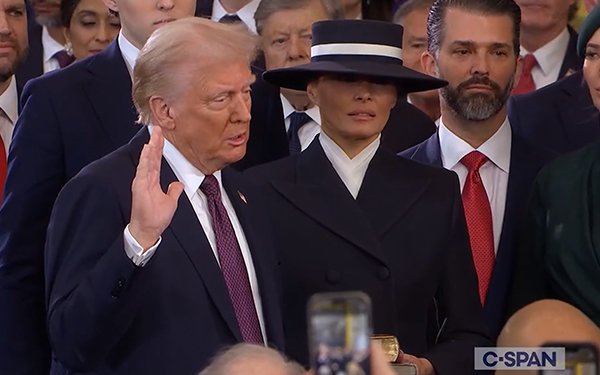
A Presidential inauguration isn't what it used to be -- at
least when compared to its earned media TV exposure.
The second inauguration of President Trump earlier this week limped into U.S. TV viewers' homes with a weak 24.6 million Nielsen-measured
average viewers.
This was not only down 27% from President Biden’s 2021 inauguration at 33.8 million, but also 20% lower than the 30.6 million total for Trump's first inauguration in
2017.
The 2025 event was aired by 15 networks, compared to 17 networks in 2021 and 12 in 2017.
Many younger viewers tuned away, as did a lot of key viewers age 55 and up, who were down
16% to 17.5 million versus the total for Biden’s inauguration (20.9 million) and down 9% compared to 2017 for Trump (19.2 million).
Typically, second Presidential administration
inaugurations always post lower TV viewers. Brand awareness of those public officials -- and what they are all about -- is already high.
advertisement
advertisement
This time, there might be increased fatigue, perhaps
spilling over from the long Trump campaign rallies toward the end of the 2024 campaign year, where supporters could be seen walking out of events.
In addition, the year-long hyper-focused
Presidential campaign 2024 year of political news could account for much of this late-year fatigue heading into January.
Consider this: Election night TV viewing in November was down 25% to
42.3 million versus 2020. Mostly younger 18-54 viewers (15.8 million) fell most steeply -- 37%.
This followed a heavy campaign year, where the total average prime-time viewership among the
three big news networks -- Fox News Channel, MSNBC, and CNN -- witnessed a 15% increase from the year before of 4.3 million versus 3.7 million. (Of course, 2023 was a non-political year.)
Total day TV news viewership among the three networks was up a modest 10% to 2.7 million.
Lastly, consider this: While Trump got 77.3 million votes (49.8%) and former Vice President Harris
got 75.0 million (48.3%), there were some 89.3 million eligible voters --
36% of all eligible voters -- who did not vote in the Presidential election.
That number is up from 80.9 million in 2020 and down slightly from 92.0 million in 2016.
Can TV networks --
overall -- figure out a way to attract more of those eye-rolling voters?